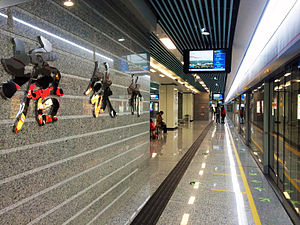
Tanwei Station, formerly Datansha South Station (大坦沙南站) and Datansha Station during planning, is an elevated station on Line 5 of the Guangzhou Metro and an underground station on Line 6. It is located at Zhongshuangqiao Park (中双桥公园) on Datansha Island in the Liwan District. It opened on 28 December 2009. It became an interchange station between Line 5 and Line 6 on 28 December 2013.
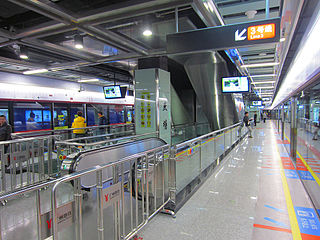
Yantang Station is a metro station on Line 3 and Line 6 of the Guangzhou Metro. The underground station is located on the Guangshan Highway (广汕公路) in the Tianhe District of Guangzhou. It started operation on 30 October 2010 and on 28 December 2013, became an interchange station between Line 3 and Line 6 of the Guangzhou Metro.

Maigaoqiao station, is a station of Line 1 of the Nanjing Metro, and is the current northern terminus of the line. It started operations on 3 September 2005 as part of the line's Phase I from this station to Andemen.

Hedingqiao station, is a station of Line 1 of the Nanjing Metro. It began operations on 28 May 2010, as part of the southern extension of line 1 from Andemen to CPU.

Youfangqiao station, known as Wangjiacun station during planning until 2007, is a station on Line 2 and Line S3 of the Nanjing Metro. It started operations on 28 May 2010 along with the rest of Line 2. The interchange with Line S3 opened on 26 December 2017 with the opening of that line.

Sanyang Plaza station, is an interchange station of Line 1 and Line 2 of the Wuxi Metro. It started operations on 1 July 2014. It is the largest metro station of China.

Yingwanzhen station is a subway station in Changsha, Hunan, China, operated by the Changsha subway operator Changsha Metro.
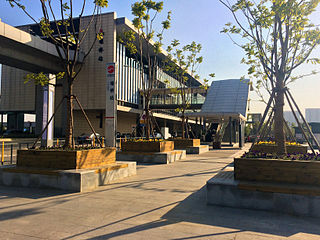
Yanqiao Station is a metro station on Line 1 of the Wuxi Metro. It began operations on 1 July 2014. The station is reserved for Xincheng Urban Line (锡澄市域轨道交通线) services towards Jiangyin.

Shenglimen Station, is a metro station of Line 1, Wuxi Metro. It started operations on 1 July 2014.
Nanchan Temple Station, is a metro station of Line 1, Wuxi Metro. It started operations on 1 July 2014.
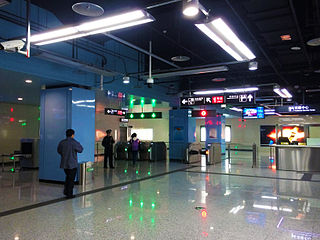
Tanduqiao Station, is a metro station of Line 1, Wuxi Metro. It started operations on 1 July 2014.
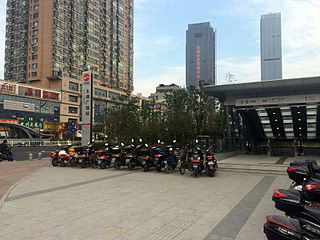
Taihu Square Station, is a metro station of Line 1, Wuxi Metro. It started operations on 1 July 2014.

Qingmingqiao Station, is a metro station of Line 1, Wuxi Metro. It started operations on 1 July 2014.

Huaqingdaqiao Station, is a metro station of Line 1, Wuxi Metro. It started operations on 1 July 2014.

Dawangji Station, is a metro station of Line 2, Wuxi Metro. It started operations on 28 December 2014.

Liangxidaqiao Station, is a metro station of Line 2, Wuxi Metro. It started operations on 28 December 2014.

Zhuangqiao Station, is a metro station of Line 2, Wuxi Metro. It started operations on 28 December 2014.

Zhaqiao Station, is a metro station of Line 2, Wuxi Metro. It started operations on 28 December 2014. It will be the terminus of line 4.
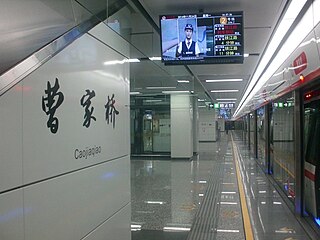
Caojiaqiao is a metro station on Line 2 of the Hangzhou Metro in China. It is located in the Xiaoshan District of Hangzhou. This station has four exits.
Wutangguangchang station is a station of Line 3 of the Nanjing Metro. It started operations on 1 April 2015. It is one of nine stations on Line 3 that are decorated with a Dream of the Red Chamber theme.



